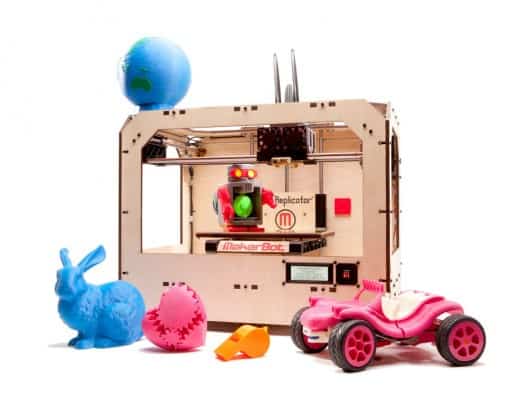7 Educational Uses for 3D Printing

By Nancy Parker
When someone says that they have a 3D printer, many people visualize a printer that produces 3D images on a sheet of paper. In actuality, a 3D printer goes beyond an image on paper and brings the object to life in real 3D. Layer by layer, the 3D printer can replicate images created in CAD programs. Any creation in supported design programs can be brought into the real world. What are some educational values of the 3D printer?
1. Biology: Need a cross section of a heart for your students to study with? Perhaps you need several for a whole classroom? A 3D printer can replicate as many items you need with great detail.
2. Auto: Samples of automobile pieces can be created for students to study with. As 3D printers can separate pieces in order to produce actual moving parts without assembly, a working model can be created for any part of the automobile.
3. Geography: Technology of today can allow us to graph the contours of various landscapes. By importing those images and contours into the CAD program, geography class can get a detailed terrain map of any area you are studying.
4. Drafting: After initial drawings of the building a student is working on, a perfect 3D creation of it can be created. This process can be used to create vehicles of all kinds within a drafting class and could lead to more inventive ways to keep students on task.
5. Graphic Design: As students create masterpieces of 3D art in the classroom, the 3D printer can bring the art into reality. Any design and shape that can be imagined can be created in real-life. Models of creatures, video game characters, special effects, and more can be made to increase the value of a presentation for graphic design.
6. History: Can you imagine a scale accurate model of some of the most pivotal points in historic battles? Perhaps a 3D rendering of tectonic plate movements could assist a student in receiving a good grade on their Earth history report. Dinosaur bones can be reduced in size to demonstrate some of the features of these creatures in amazing detail.
7. Artifacts: There are some things in this world that our students could learn so much from if they had access to them. With a good 3D artist in a CAD program, those items could be recreated for any purpose. Can the recreation of stone tablets help accentuate the learning process of an ancient civilizations class?
If it can be created in a supported 3D rendering program, it can exist in real life. The possibilities of educational purposes for these printers are endless.
Nancy Parker writes about wide range of subjects like health, Parenting, Child Care, Babysitting, nanny, www.enannysource.com/ etc. You can reach her @ nancy.parker015 @ gmail.com.
Photo Courtesy of Makerbot





0 Comments
Leave a Comment
Your email address will not be published. All fields are required.